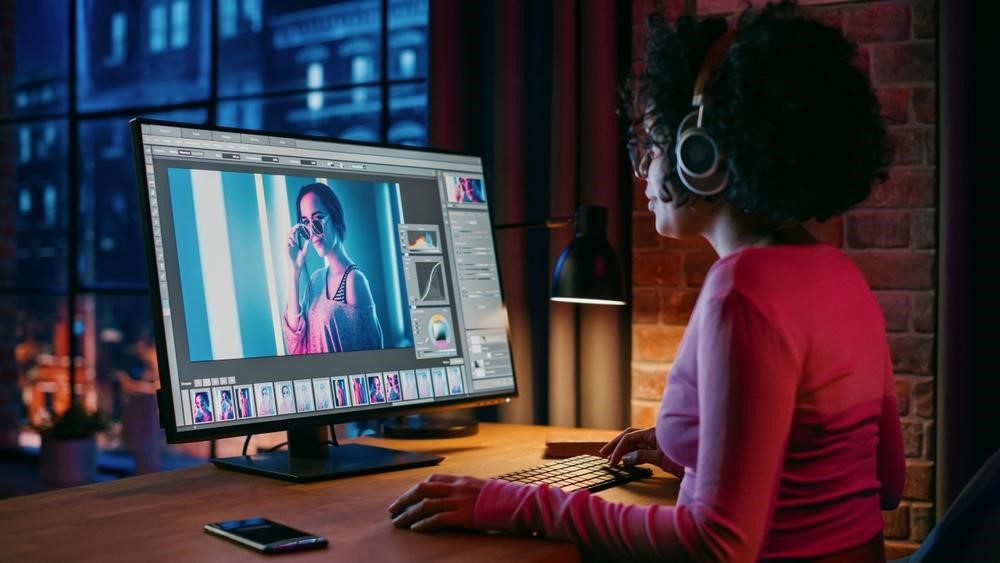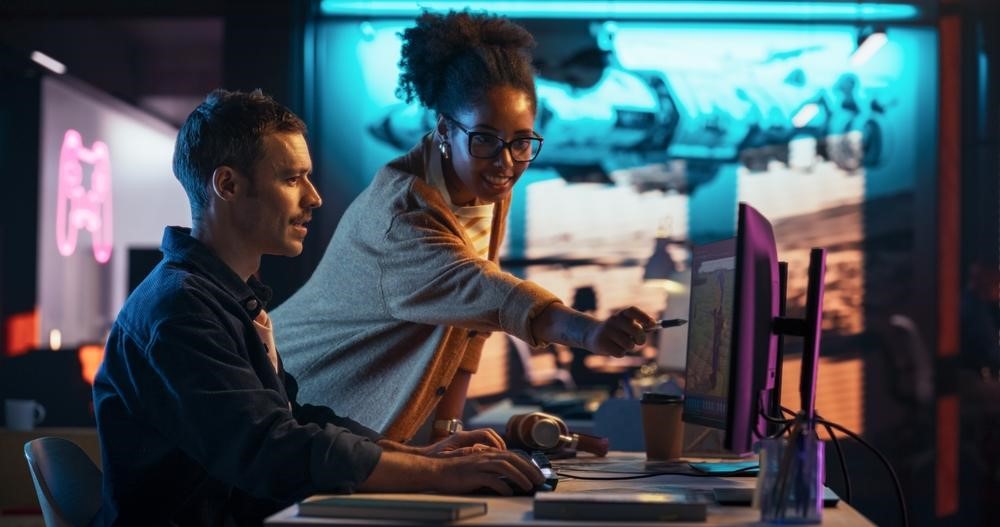Generative AI is reshaping the graphic design industry by introducing new tools and methods that streamline workflows and inspire creativity. From automating routine tasks to generating innovative visuals, AI now seems essential to the designer’s toolkit. This technological shift is influencing how designers approach their work and how they utilize graphic design equipment in their daily processes.
As AI continues to advance, it offers opportunities for both seasoned professionals and newcomers to enhance their skills. Understanding how generative AI impacts graphic design is crucial for anyone interested in the field.
Table of Contents
Generative AI and Its Introduction in Graphic Design
Generative AI is artificial intelligence that can create new content, such as images, videos, and text, by learning patterns from existing data. Unlike traditional AI, which follows explicit programming to perform tasks, generative AI uses complex algorithms to generate original outputs that mimic human creativity. This technology leverages models like Generative Adversarial Networks (GANs) and transformer-based architectures to produce innovative and unique designs.
Generative AI began making significant inroads into graphic design in the early 2010s, coinciding with advancements in machine learning and increased computational power. Initially, AI assisted designers by automating repetitive tasks and providing basic design suggestions. Over time, as the technology matured, generative AI started to play a more integral role, enabling designers to explore new creative possibilities and push the boundaries of traditional design methods.
Today, generative AI is considered a valuable addition to graphic design equipment and skills. Designers use AI-powered software to generate complex patterns, suggest color schemes, and create entirely new visual concepts. This integration allows for a more efficient design process, where AI handles the heavy lifting of idea generation and execution, freeing designers to focus on refining and perfecting their creative visions.
Let’s explore how AI is transforming graphic design and what this means for the industry’s future.
Accelerating the Design Process
Generative AI tools like Adobe Firefly and DALL·E 2 are speeding up the design process by automating repetitive tasks. Designers can now generate images from text prompts, allowing them to focus more on creativity and less on manual work. This acceleration helps in producing drafts quickly, which can be refined further for final output.
With AI handling the initial stages, designers can make better use of their graphic design equipment, like graphics tablets and high-resolution computer monitors. These tools become more effective when combined with AI, as they allow for quick iterations and adjustments. The result is a more efficient workflow that saves time and resources.
Democratization of Design
AI-powered design tools are making graphic design more accessible to people without formal training. Platforms that offer AI features enable users to create professional-quality graphics with minimal effort. This accessibility is expanding the creative community and encouraging more people to explore graphic design.
While traditional software was once a barrier to entry, AI tools often require less specialized knowledge. This change opens doors for diverse talent and alters the industry’s landscape. People previously intimidated by complex design processes can now confidently participate.
Personalization in Design
Generative AI allows for a high degree of customization in design projects. Brands can create personalized marketing materials that appeal to individual customer preferences. AI algorithms can adjust designs based on data insights, making each piece of content more relevant to its audience.
This level of personalization was challenging to achieve before AI became prevalent. Designers can now produce multiple variations of a design quickly, tailoring content to different audience segments. This approach enhances engagement and improves the effectiveness of marketing campaigns.
Exploring New Artistic Styles
AI is enabling designers to experiment with new artistic styles and visuals. Tools that use machine learning can generate unique images that might not be possible through traditional methods. This innovation is pushing the boundaries of what is considered achievable in graphic design.
By exploring AI-generated images, designers can discover fresh ideas and incorporate them into their work. This leads to more creative and original designs, keeping the field of graphic design dynamic and evolving. It also allows designers to stand out in a competitive market.

Addressing Ethical Questions
The rise of generative AI brings up questions about ownership and ethics in design. Since AI can generate content based on existing works, there are concerns about originality and intellectual property rights. Designers and companies need to navigate these issues carefully to avoid legal complications.
Understanding how AI algorithms work is essential for ethical design practices. Open discussions and updated regulations are needed to address these challenges. Being aware of these issues helps designers use AI responsibly and maintain the integrity of their work.
Changing Roles, Not Eliminating Jobs
There are fears that AI might replace human designers, but experts suggest that AI will change roles rather than eliminate them. Designers will still be needed to provide creative direction and make critical decisions that AI cannot replicate. The human touch remains important in crafting meaningful designs.
Embracing AI as a tool can enhance a designer’s capabilities. By automating routine tasks, designers have more time to focus on innovation and strategy. This shift allows for more fulfilling work and can lead to better outcomes for clients and projects.
Improving Collaboration
AI is enhancing collaboration among design teams by providing tools for real-time feedback and adjustments. Software that integrates AI features allows multiple users to work on a project simultaneously, making the collaborative process smoother. This leads to more efficient teamwork and better end results.
Designers can share ideas quickly and see instant updates, reducing the time spent on revisions. This improved communication helps teams stay aligned and ensures that everyone is working toward the same goals. AI-powered collaboration tools are becoming valuable assets in the design industry.
Opportunities for Learning
Educational resources are incorporating AI to teach design principles more effectively. Online courses and tutorials now include modules on how to use AI tools in graphic design. This helps professionals and students stay updated with the latest technologies.

As designers become more proficient with these tools, they can produce higher-quality work and remain competitive in the industry. Continuous learning is key in adapting to the changes brought by AI. Embracing new technologies can open up new career opportunities and avenues for creativity.
Embracing the Future of Graphic Design
Generative AI is transforming graphic design by enhancing creativity and efficiency. As AI tools become more integrated into the design process, it’s important for professionals to adapt and learn. Embracing these technologies will prepare designers for future challenges. Stay ahead by exploring AI tools and seeing how they can elevate your design projects.

